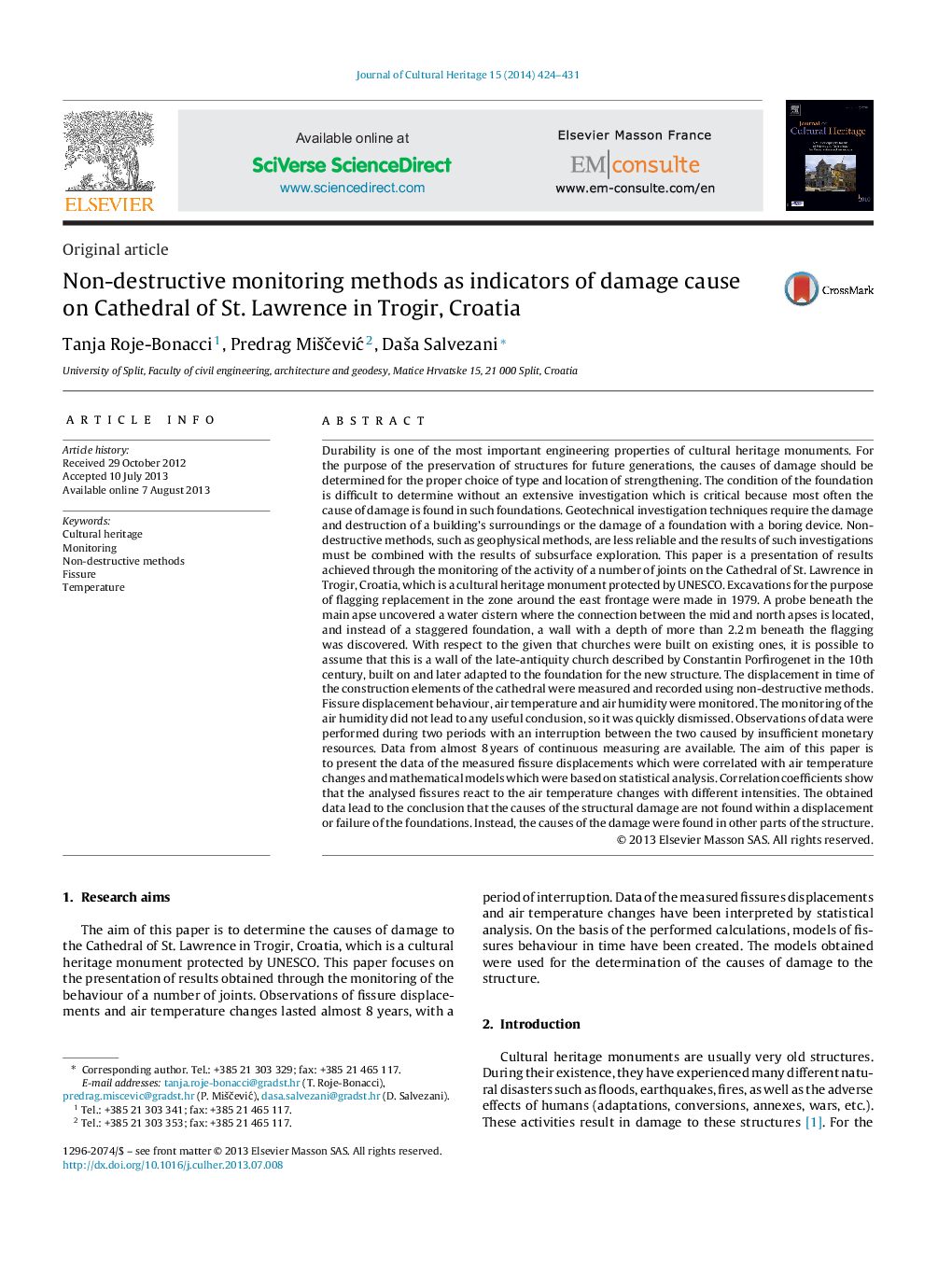| کد مقاله | کد نشریه | سال انتشار | مقاله انگلیسی | نسخه تمام متن |
|---|---|---|---|---|
| 1037999 | 944195 | 2014 | 8 صفحه PDF | دانلود رایگان |
Durability is one of the most important engineering properties of cultural heritage monuments. For the purpose of the preservation of structures for future generations, the causes of damage should be determined for the proper choice of type and location of strengthening. The condition of the foundation is difficult to determine without an extensive investigation which is critical because most often the cause of damage is found in such foundations. Geotechnical investigation techniques require the damage and destruction of a building's surroundings or the damage of a foundation with a boring device. Non-destructive methods, such as geophysical methods, are less reliable and the results of such investigations must be combined with the results of subsurface exploration. This paper is a presentation of results achieved through the monitoring of the activity of a number of joints on the Cathedral of St. Lawrence in Trogir, Croatia, which is a cultural heritage monument protected by UNESCO. Excavations for the purpose of flagging replacement in the zone around the east frontage were made in 1979. A probe beneath the main apse uncovered a water cistern where the connection between the mid and north apses is located, and instead of a staggered foundation, a wall with a depth of more than 2.2 m beneath the flagging was discovered. With respect to the given that churches were built on existing ones, it is possible to assume that this is a wall of the late-antiquity church described by Constantin Porfirogenet in the 10th century, built on and later adapted to the foundation for the new structure. The displacement in time of the construction elements of the cathedral were measured and recorded using non-destructive methods. Fissure displacement behaviour, air temperature and air humidity were monitored. The monitoring of the air humidity did not lead to any useful conclusion, so it was quickly dismissed. Observations of data were performed during two periods with an interruption between the two caused by insufficient monetary resources. Data from almost 8 years of continuous measuring are available. The aim of this paper is to present the data of the measured fissure displacements which were correlated with air temperature changes and mathematical models which were based on statistical analysis. Correlation coefficients show that the analysed fissures react to the air temperature changes with different intensities. The obtained data lead to the conclusion that the causes of the structural damage are not found within a displacement or failure of the foundations. Instead, the causes of the damage were found in other parts of the structure.
Journal: Journal of Cultural Heritage - Volume 15, Issue 4, July–August 2014, Pages 424–431
